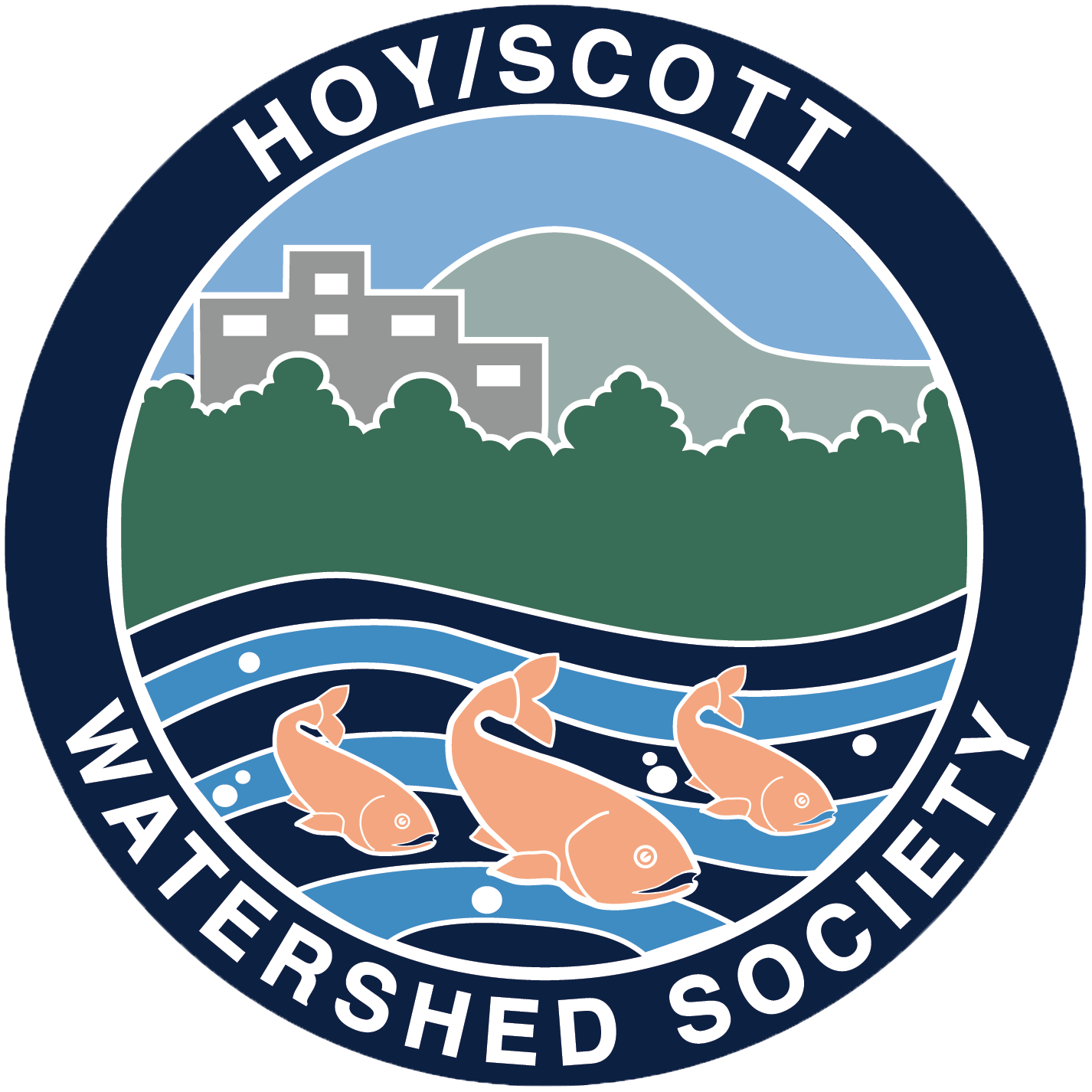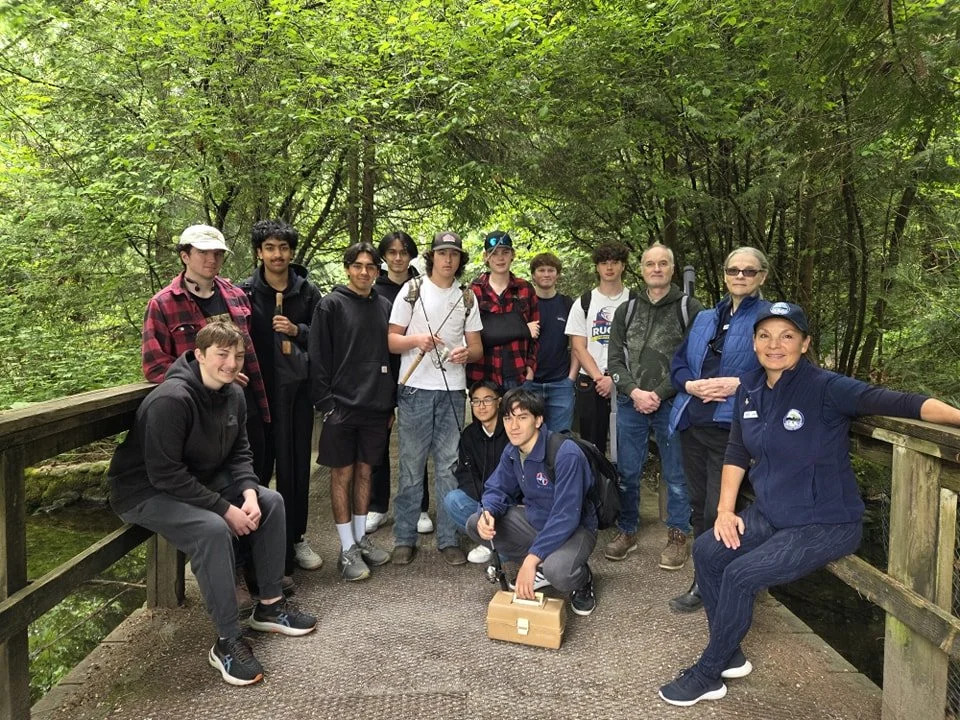Dennis Marsden, City Councillor; Rodney Lee, former HSWS hatchery manager; Niall Williams, tributee and former HSWS member and hatchery manager; and Kyle Uno, HSWS President.
At this year’s Salmon Come Home event on October 26, the Hoy/Scott Watershed Society had the pleasure of recognizing one of our earliest and most dedicated members, Niall Williams.
Former hatchery manager Rodney Lee joined us to present Niall Williams with a Certificate of Appreciation for his many years of commitment and leadership at the Hoy Creek Hatchery. Joining in the presentation were Kyle Uno, President of the Hoy/Scott Watershed Society, City of Coquitlam Councillor Dennis Marsden, and several of our newest volunteers, who listened with great respect as Rodney shared stories of Niall’s lasting influence.
Rodney reflected on Niall’s deep roots within the Society and the stewardship community:
“I started with the Society back in 2008. To me, Niall was synonymous with all things hatchery. He was the hatchery manager and dealt with all aspects of running the hatchery and coordinating with Maurice and Scott from DFO. He had wonderful knowledge of the history of the area as well as the value of the various locations in the Tri-Cities. For the longest time, I couldn’t figure out if he was a naturalist who raised salmon, or a salmon hatchery guy who was a naturalist. I’ve come to understand his love for nature as well as the love for the community that he lives within.”
“To those who don’t know him well, Niall might appear very quiet and reserved. For those of us who had his friendship, we got to know a very thoughtful, intelligent, generous, and kind man. I’m thankful for the gifts of knowledge he shared — from conducting invertebrate salvage prior to pond cleanouts, to managing the fish fence, weirs, and water levels. There was nothing better than working side by side, getting our hands dirty, and working with fish!”
Niall Williams in Hoy Creek during Salmon Come Home back in the early days. (HSWS Fonds)
Rodney also emphasized the foundational role that both Niall and Linda Gorsline played in keeping the Society active during its earlier years.
“During my early years with the Society, it was Linda who managed the affairs of the organization, and Niall who had the technical knowledge to make the hatchery run. To me, through that time period, if not for Niall and Linda, there would not have been a Society and hatchery for us to enjoy today.”
Members of the local stewardship community — including Dave Bennie (Noons Creek Hatchery), Ruth Foster (Mossom Creek Hatchery), and Elaine Golds (Burke Mountain Naturalists) — have also expressed their shared recognition of Niall’s tremendous contributions to watershed and habitat stewardship across the Tri-Cities.
We are deeply grateful for Niall’s many years of dedication, mentorship, and passion for salmon and nature. Thank you, Niall, for everything you’ve done to support the health of Hoy Creek and inspire future stewards!
At Salmon Come Home 2025 | Rodney Lee (HSWS), Niall Williams (HSWS Honouree), and Dave Bennie (Noon’s Creek Hatchery)









